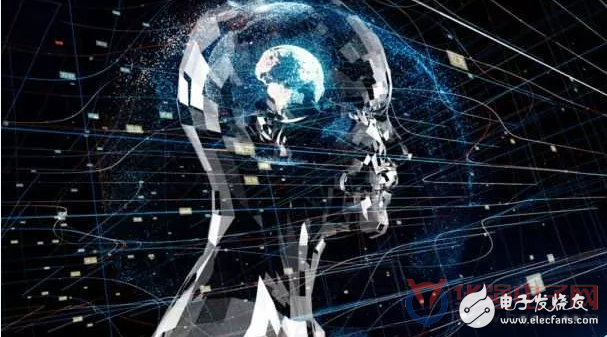Technology trends in 2018, Japan's name AI, AR, VR will have explosive growth
In 2018, Japan was set to witness a significant surge in AI, AR, and VR technologies, with smart speakers making a strong comeback as revolutionary devices that would drive the next wave of innovation. These voice-activated assistants were seen as key players in redefining how people interact with digital technology. The image below illustrates this growing trend.

Japan, known for its keen interest in trends, often makes bold predictions at the start of each year. In 2018, media outlets highlighted the potential of smart speakers, expressing optimism about their role in shaping the future of home technology. As a new generation of digital devices, smart speakers were expected to transform user interaction by shifting from touch-based interfaces to voice-driven commands.
**Smart Speakers: The Voice-Powered Revolution**
Smart speakers were positioned as the next evolution after smartphones, changing the way users engage with technology. By allowing users to navigate the internet through simple voice commands, these devices promised convenience and efficiency. Companies like Google, LINE, and Amazon were actively competing in the Japanese market, introducing products such as Google Home, Clova WAVE, and Amazon Echo.
Users could activate these devices using specific wake-up words like “OK Google,†“Clova,†or “Alexa.†These devices utilized AI-powered natural language processing to understand and respond to user requests, even managing smart home functions like lighting and cleaning. Amazon Echo, in particular, had a dominant market share in the U.S., with analysts predicting it could surpass the success of the Kindle.
The demand for smart speakers was driven by the idea that they could fill the gaps left by smartphones—especially during activities like cooking, driving, or doing chores. According to reports, smart speakers could become essential household items, even personal devices for individuals.
However, challenges remained. Issues such as inaccurate voice recognition and limited functionality needed improvement. The development of more natural dialogue systems was crucial for 2018, as was finding ways to monetize the service through advertising or other revenue models.
**VR and AR: Lowering the Barriers**
Two years prior, terms like VR (Virtual Reality) and AR (Augmented Reality) began to appear more frequently in everyday conversations. While 2016 was considered the first major year for VR, AR gained popularity through mobile games. Despite this, the adoption of both technologies in 2017 was slower than expected.
One of the main reasons was the high cost of entry. A VR headset alone could cost around 50,000 yen, plus the need for a high-performance computer or gaming console. To address this, companies introduced more affordable options. HTC launched the Vive Focus, an all-in-one VR device priced around 4,000 yuan, while Oculus planned to release the Oculus Go for as little as $200.
Content development also played a key role. Early adopters were mainly tech enthusiasts and gamers, but developers were working on expanding the appeal to a broader audience. Improvements in comfort and reducing motion sickness were also top priorities.
Beyond entertainment, VR and AR had vast potential in industries like real estate, retail, and automotive. For instance, VR allowed buyers to explore homes virtually, while AR could enhance driving safety by projecting information onto windshields.
Magic Leap, despite delays, finally launched its AR glasses, Magic Leap One, in late 2017. With improved visuals and reduced discomfort, the company aimed to make AR more accessible. Analysts predicted that 2018 would be a pivotal year for AR and VR, with the market expected to grow to $120 billion by 2020.
**AI: The Future of Computing**
Artificial Intelligence was expected to have a major impact across various sectors in 2018. From industrial automation to healthcare and autonomous vehicles, AI was becoming a central force in technological advancement. Collaboration between companies in different industries was increasing, leading to new innovations and applications.
The competition for AI-specific hardware was intensifying. While NVIDIA's GPUs remained popular, Google developed the Deep Learning Unit (DLU), and Intel and Fujitsu also entered the market with their own AI processors. Market forecasts suggested that the AI industry would grow at an average annual rate of 57% from 2017 to 2025.
In addition to hardware, 2018 also saw advancements in quantum computing. Companies like D-Wave and IBM were leading the charge, with Japan also making strides through initiatives like the Quantum Neural Network (QNN) cloud system. These experiments, though still in early stages, hinted at a future where quantum computers could revolutionize computing power.
Another emerging trend was the rise of IoT-enabled personalized products. Zozotown’s Zozosuit, for example, used sensors to measure body dimensions accurately, offering a virtual fitting experience without the need for physical try-ons.
As 2018 unfolded, the integration of AI, AR, VR, and smart speakers was reshaping the digital landscape, promising a future filled with innovation and convenience.
Industrial Control PCB Assembly,Industrial Control PCBA,PCBA boards for industrial control
Dongguan Jinglin Communication Technology Co., Ltd. , https://www.jlpcba.com